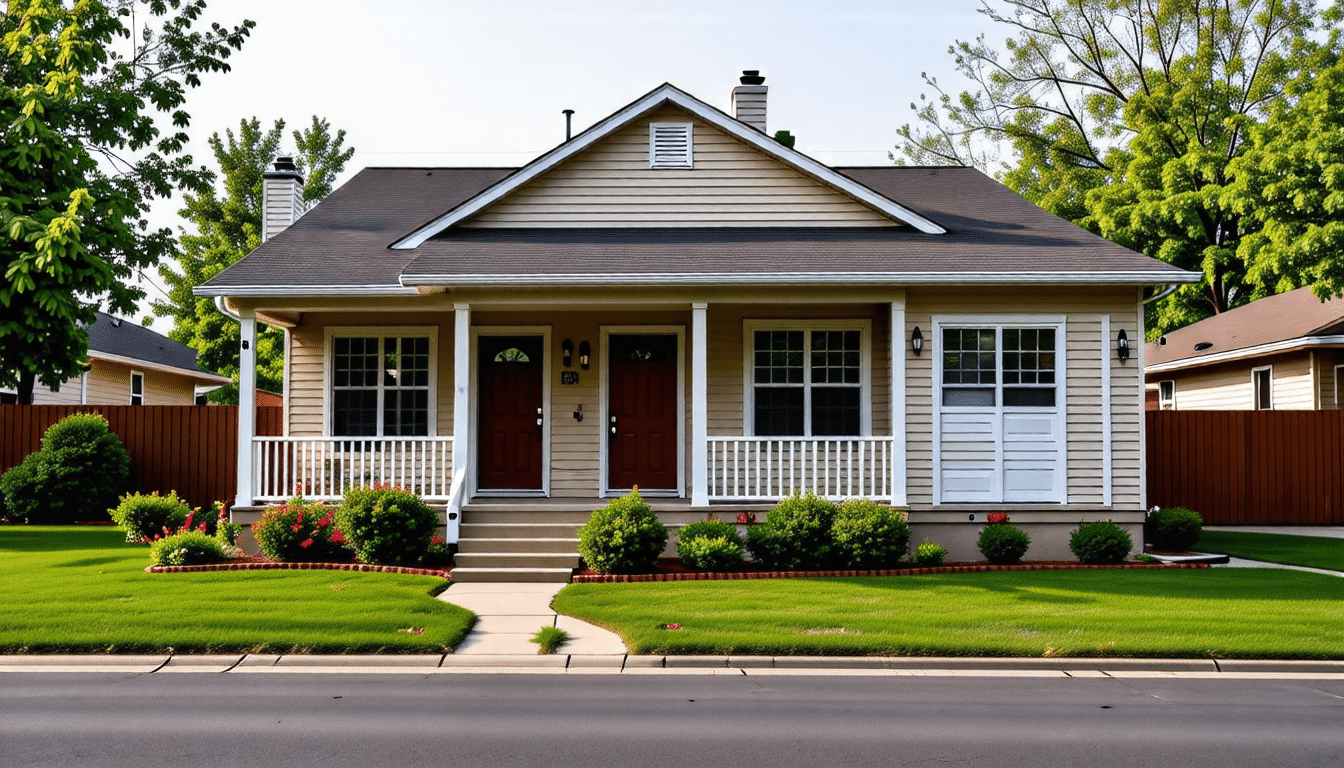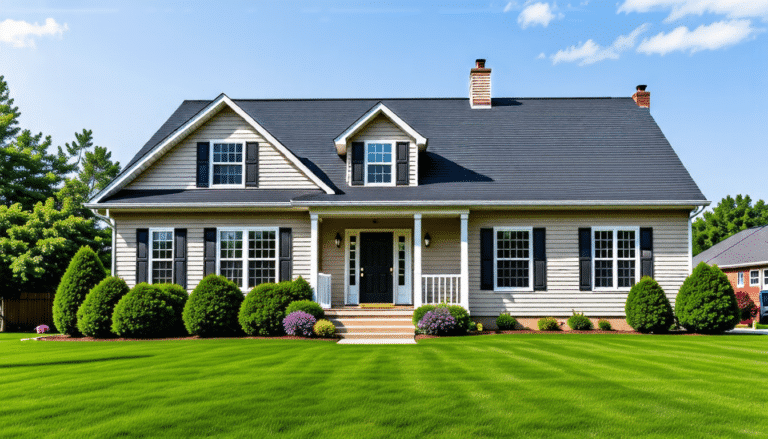Single-family homes provide a smart choice for new real estate investors
Why Choosing Single-Family Homes Over Multifamily Properties Makes Sense
When I began my real estate investing journey, I was drawn to single-family homes for several compelling reasons. As someone new to the industry, I wanted to mitigate risk, achieve reliable appreciation, and, most importantly, avoid unnecessary complexity. While multifamily properties may appeal to some investors, single-family homes provide unique advantages, making them an ideal starting point for those looking to build long-term wealth. Here’s why I started real estate investing with single-family homes and why you might consider doing the same.
Lower Operational Complexity
One of the primary reasons I started real estate investing with single-family homes was their straightforward management compared to multifamily properties. A single-family home only involves one tenant or family per property. This is a huge benefit for new investors who want to keep the operational complexity to a minimum and avoid dealing with multiple tenant issues. Contrast this with a multifamily property, where you’re responsible for multiple units, tenants, and maintenance headaches all under one roof.
Managing a single tenant means less coordination, fewer maintenance requests, and ultimately fewer headaches. If you’re new to the world of real estate, starting with a single-family home allows you to learn the ropes without being overwhelmed by the demands of multifamily property management.
Stronger Appreciation Potential
A significant factor in why I started real estate investing with single-family homes is the appreciation potential. Unlike multifamily units, the value of single-family homes is often driven higher by the demand among individual homebuyers. These buyers tend to make highly emotional decisions when purchasing homes for their families. As a result, they’re willing to bid up the price for properties in desirable neighborhoods with good schools and amenities.
This emotional component is a stark contrast to multifamily buyers, who are typically investors focused solely on the numbers. In multifamily investments, buyers see the property as part of their broader portfolio and aim to minimize costs, driving much harder bargains. In short, single-family homes are more likely to be valued based on their potential as a home, rather than just an investment asset, leading to better appreciation over time.
More Diverse Tenant Pool and Easier Rentability
Another reason I started real estate investing with single-family homes is the broader pool of potential tenants they attract. From families to professionals, single-family homes tend to meet a wider range of demand because they offer amenities that multifamily properties can’t, such as backyards, garages, and more privacy. This makes single-family rentals highly desirable for tenants who plan to stay longer, reducing turnover costs and vacancies.
Moreover, single-family neighborhoods often offer a safer, more community-oriented environment compared to tenant-heavy areas typically surrounding multifamily properties. This makes them especially appealing to families with children or pets, who value the stability and privacy of a standalone home. Renting out single-family homes, therefore, often leads to tenants who are more financially stable and committed to long-term leases—important factors for reducing tenant turnover.
Less Legal Liability and Responsibility
If you’re worried about legal liability, then single-family homes present a less risky option. Here’s another reason why I started real estate investing with single-family homes: the reduced responsibility regarding property maintenance. In most rental agreements for single-family homes, tenants are responsible for tasks like lawn care, snow shoveling, and even minor repairs like changing light bulbs or smoke detector batteries. This is a big difference from multifamily properties, especially when you own duplexes or fourplexes where the landlord may be responsible for maintaining common areas or ensuring safe conditions for multiple tenants.
Each additional tenant in a multifamily unit increases the possibility of legal challenges or disputes, from noise complaints to shared space issues. The simpler your property, the fewer legal hurdles you’ll face as a landlord. For new investors, limiting liabilities is a smart move, and single-family homes offer a clear advantage in this area.
Diverse Exit Strategies
The versatility of single-family homes was another driving factor when I started real estate investing. With a single-family property, your potential buyers are not just investors like yourself, but also families looking for a home to buy. This expands your buyer pool significantly when it comes time to sell. Whether you’re selling on the open market, to other investors, or even to your tenants, single-family homes offer far more exit strategies than multifamily properties, providing flexibility in various market conditions.
Multifamily properties, on the other hand, limit your exit options largely to other investors. This narrowed down pool becomes even more problematic if the market isn’t in your favor, as other investors will often push for heavy discounts to increase their own profit margins.
For these reasons and more, when deciding where to start, single-family homes emerged as the clear choice for me. Their simplicity, higher appreciation potential, and diverse exit strategies made it an ideal entry point into the world of real estate.
Key Benefits of Single-Family Homes for New Investors
When I started real estate investing with single-family homes, there were several key benefits that attracted me as a new investor. This decision allowed me to gradually build my portfolio without overwhelming complexity while also tapping into profitable opportunities. Whether you’re considering your first property or expanding your investments, the advantages of single-family homes are hard to ignore. Let’s explore some of the most significant benefits that made this asset class the perfect starting point for my real estate journey.
Lower Risk for First-Time Investors
Why I started real estate investing with single-family homes ties back to one important factor: minimizing risk. For new investors like myself, risk mitigation is crucial, and single-family homes provide a safer entry into the market compared to multifamily properties. Single-family homes generally feature lower entry costs, which reduces financial exposure. Additionally, because they tend to be located in suburban, family-friendly areas, they offer more stability in rental demand, reducing the likelihood of vacancies.
Another reason I chose this investment route is because single-family homes don’t subject landlords to the complexities of managing numerous tenants under one roof. Multifamily units often have problems ranging from tenant conflicts to managing multiple repairs at once—a level of stress that new investors might find overwhelming. By choosing a single-family property, I was able to learn the ropes of property management without diving into chaos.
Higher Appreciation and Demand Among Buyers
The appreciation potential of single-family homes was another strong incentive for why I began real estate investing in this market. Single-family homes tend to appreciate more in value because they’re often driven by the emotional decisions of homebuyers. Families looking to settle down are willing to pay a premium for homes in good neighborhoods with access to quality schools, parks, and other amenities. This demand ultimately pushes up home prices over time, something multifamily properties don’t benefit from as much.
In the world of real estate, appreciation can provide substantial long-term gains. Investors in multifamily buildings typically focus on income potential and evaluate the property with a firm eye on cash flow, often pushing for discounts during negotiations. In contrast, single-family homes attract not only investors but also potential homeowners, giving you two distinct buyer pools when it’s time to sell. Why I started real estate investing with single-family homes was largely influenced by this future flexibility.
Fewer Management Responsibilities
Managing a single tenant or family, as opposed to multiple tenants in a multi-unit building, cuts down significantly on the daily management responsibilities. This was yet another reason why I gravitated toward single-family homes when starting my real estate investment journey. Since most tenants in single-family homes are families planning to stay put for the long term, there’s inherently less turnover. With fewer tenants to manage, you spend less time dealing with missed rent payments, minor disputes, or routine repairs.
Additionally, tenants in single-family homes often take on certain responsibilities themselves, such as lawn care or minor home maintenance, further reducing the need for landlord intervention. Compare this to multifamily properties, where a landlord may be responsible for shared areas, utilities, or simply navigating the complexities of dealing with disagreements among tenants.
Better Tenant Stability
Why I started real estate investing with single-family homes was also due to the quality and stability of tenants. The typical tenant for a single-family home is often a family unit, sometimes with children or pets, who are looking for long-term housing. These tenants usually value stability and are more likely to stay for several years, especially if the property is well-maintained and situated in a good neighborhood.
Compared to tenants in multifamily properties, who may see their apartment as a temporary solution or stepping stone to something better, single-family home tenants often feel a sense of pride in maintaining the property. The result? Fewer turnovers, more consistent rental income, and lower vacancy rates, which all contribute to far fewer headaches. For a new investor, this tenant stability provides peace of mind and more predictable cash flow.
Simplified Tax and Legal Considerations
Starting with single-family homes also offers simplified tax and legal obligations, which is another reason why I started real estate investing with this asset class. With one unit and one tenant, the bookkeeping is straightforward, and you’re less likely to encounter complex tax regulations that could arise from managing a multifamily building. Additionally, legal disputes are less frequent, as there are no concerns over shared spaces or complaints among multiple tenants living side by side.
In a multifamily property, there’s a higher probability of facing legal issues, from neighbor disputes to liabilities over common area upkeep. By sticking with single-family homes, I reduced my legal exposure, ensuring that my first steps into real estate investment were smooth and manageable. This lower risk of legal complications allowed me to focus on growing my investment portfolio without the constant worry of tenant squabbles landing me in court.
More Financing Options
One of the final reasons why I started real estate investing with single-family homes is the broader range of financing options available. Banks and lending institutions often view single-family homes as less risky investments, making it easier for new investors to secure favorable loan terms. This makes entering the market less daunting, especially for those of us who are working with limited capital initially.
By choosing single-family homes, you also open the door to potential financing options like first-time homebuyer programs, conventional FHA loans, or even seller financing, depending on the specific deal. The financing world is more flexible here compared to multifamily properties, where banks perceive a higher risk and so require stricter loan terms or higher down payments. For first
Implementing Strategies for Maximizing Single-Family Home Investment Success
When I started real estate investing with single-family homes, I quickly realized that success isn’t just about securing the property—it’s about developing smart strategies to maximize returns. With the right approach, your single-family home can appreciate in value, maintain steady cash flow, and attract long-term tenants. Below are some sharing strategies that have helped me, and can help you, take your single-family real estate investment to the next level.
Focus on Location and Neighborhood Research
One of the core strategies that guide all of my investments is the importance of location. When I started real estate investing with single-family homes, I prioritized researching neighborhoods that had strong amenities, good schools, and employment opportunities nearby. Even if a home is in great condition, if it’s in an undesirable area, you could struggle to find tenants or buyers when you later decide to sell. Ensuring the home is within a desirable community is key to appreciating property values and ensuring consistent rental demand.
Targeting suburban areas or growing cities with a solid job market and population growth has helped me secure homes that not only attract quality tenants but also are poised to appreciate over time. I always tell new investors: look at future infrastructural developments, planned transportation hubs, and top-rated schools—these are telltale signs of future appreciation.
Analyze Rental Demand and Set Competitive Prices
Another critical aspect of why I started real estate investing with single-family homes is the relatively easier ability to analyze rental demand and establish competitive rental prices. Single-family homes often cater to families, professionals, and individuals who are looking for longer-term stability rather than temporary housing. Using local rental market data, I ensure that my rental rates are competitive but also in line with the amenities and benefits the property offers. You don’t want to overprice your rental and experience vacancies, and underpricing can leave profits on the table, so finding that sweet spot is key.
If you’re unsure how to set competitive prices, you can use online tools like Rentometer or Zillow’s rental value calculator, as well as engage in a simple comparative market analysis (CMA) by reviewing similar rental homes in the area. Keep tabs on trends, such as whether rents are rising or if more homes are becoming available, as this can impact your pricing strategy. Staying informed and adjusting as necessary will keep your property rented and contribute to long-term returns.
Invest in Strategic and Cost-Effective Upgrades
A well-maintained single-family home doesn’t just attract better tenants—it also stands out more when it’s time to sell. When I started real estate investing with single-family homes, one of the best lessons I learned was the impact of strategic upgrades. You don’t need to go overboard with luxury features, but focusing on improvements that enhance the home’s livability can increase its appeal to both renters and buyers.
For example, upgrading kitchens and bathrooms tends to offer some of the highest returns on investment. Even small improvements, such as adding energy-efficient appliances or fresh paint, can make a home more attractive while keeping your budget in check. Another strategy is to invest in curb appeal by ensuring the home’s exterior looks inviting. Simple landscaping enhancements and updated fixtures like new lighting or a freshly painted front door can make a huge difference.
Screen Tenants Thoroughly for Long-Term Stability
From day one of my journey, a primary reason why I started real estate investing with single-family homes was the potential for long-term tenant stability. However, not every tenant is the right fit for long-term success. Thoroughly screening tenants is critical to ensuring that you not only minimize vacancies but also reduce the likelihood of late payments, property damage, or costly tenant turnovers.
Take the time to conduct credit checks, verify employment history, and check with previous landlords to get a sense of the tenant’s reliability. While it may take a little longer to find the right tenant, this diligence upfront pays off in the long run with steady rental income and fewer headaches down the road. When you find responsible tenants, they’re much more likely to take care of your property and stay for several years, which reduces the cost and effort involved in finding new tenants again and again.
Factor in Maintenance and Property Management
It might be tempting to think that once you’ve secured tenants, the hard part is over, but regular maintenance is a key part of any successful single-family home investment. Early in my journey, I quickly realized that why I started real estate investing with single-family homes revolved around the proposition of minimal management complications. By staying on top of minor repairs and performing routine maintenance, I was able to maintain property value while keeping tenants happy.
Additionally, if you’re managing multiple investment properties or simply don’t have the time to handle day-to-day operations, partnering with a reputable property management company can be a real asset. Many new investors hesitate to budget for property management fees, but by outsourcing routine tasks like tenant communication, rental collection, and repairs, you free up your time to focus on growing your portfolio instead of being tied down by one property.
Leverage Tax Advantages and Financing Opportunities
Finally, one of the lesser-discussed but powerful strategies to maximize returns is the use of available tax advantages and smart financing. Rental income from single-family homes is taxable, but you’re also entitled to tax deductions that can offset your investment costs. Deductions on expenses such as mortgage interest, property taxes, insurance, and even maintenance costs can reduce your taxable income and keep more money in your pocket.
If appropriate, leverage low-interest financing options such as







